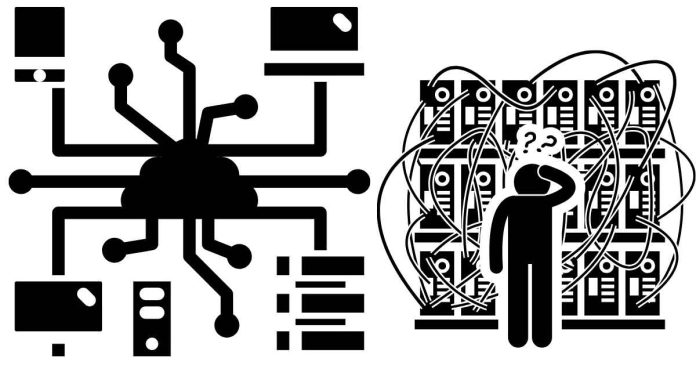In today’s interconnected world, computer networks play a crucial role in how individuals, businesses, and organizations operate. A computer network allows computers and devices to communicate, share resources, and collaborate efficiently. From sending emails to streaming content, networks are at the heart of most digital interactions. However, like any technology, computer networks come with their own set of advantages and disadvantages. In this blog post, we’ll explore the key pros and cons of computer networks.
Advantages of Computer Networks
- Resource Sharing: One of the most significant advantages of computer networks is resource sharing. Devices within a network can share resources such as printers, files, and internet connections. This reduces the need for duplicate equipment and allows users to access centralized resources, leading to cost savings and better resource utilization.
- Communication: Computer networks facilitate efficient communication. Email, instant messaging, voice calls, and video conferencing are just a few of the communication methods that networks make possible. For businesses, this enhances collaboration between employees, customers, and partners, regardless of geographic location.
- Data Access and Storage: In a networked environment, data can be accessed and stored centrally on servers, making it easier to retrieve important information. This centralized storage also enables easier backup and disaster recovery solutions, ensuring that data remains secure and accessible in case of hardware failure.
- Increased Productivity: By connecting users and resources, computer networks streamline business operations, allowing faster communication, data sharing, and task management. Employees can access the tools and information they need more efficiently, which enhances productivity and enables better decision-making.
- Cost Efficiency: Networks can help businesses save on operational costs by reducing the need for individual devices and allowing for the sharing of expensive resources like printers, storage, and internet connections. In addition, cloud services, made possible through networking, offer flexible storage and computing power, helping companies minimize their infrastructure costs.
- Scalability: Computer networks are highly scalable, meaning they can easily grow to accommodate more devices or users. Whether you’re adding new employees or expanding a business location, a computer network can be upgraded to handle increased demand without a complete overhaul of the system.
- Remote Access: Networks allow remote access to resources. Employees and users can connect to the network from anywhere in the world, as long as they have the necessary permissions and an internet connection. This is particularly useful for businesses with remote workers or those who need access to data while traveling.
- Security: While security can be a concern, computer networks also offer opportunities for improved data protection. With features like encryption, firewalls, and user authentication, networks can provide a secure environment for data transmission and access control. Centralized data storage also makes it easier to monitor and protect sensitive information.
Disadvantages of Computer Networks
- Security Risks: While networks can be secured, they are also vulnerable to hacking, malware, and data breaches. Unauthorized users may gain access to sensitive data if proper security measures are not implemented. This risk becomes more significant as networks grow and become more complex, particularly in large organizations.
- Complexity: Setting up, maintaining, and managing a computer network can be complex, especially for large networks. It requires expertise in networking protocols, security, and troubleshooting. Organizations may need dedicated IT staff to handle the intricacies of network administration, which can incur additional costs.
- Maintenance Costs: Though computer networks offer cost savings in terms of resource sharing, they also require ongoing maintenance and upgrades. This may include hardware replacements, software updates, and network troubleshooting. For large-scale networks, these costs can add up over time.
- Data Loss and Downtime: In a networked environment, if a critical server or device fails, it can lead to significant data loss or downtime. Network outages can disrupt business operations, making it essential to have backup systems and disaster recovery plans in place to minimize the impact of such events.
- Dependence on Network Infrastructure: Organizations relying heavily on computer networks become vulnerable if their network infrastructure is compromised. If the network goes down or experiences connectivity issues, it can disrupt operations and hinder access to important resources. Internet connectivity is particularly critical for businesses relying on cloud-based services.
- Privacy Concerns: With the increased interconnectivity of devices, privacy can be a concern. Personal information, user data, and sensitive business data transmitted over the network could be intercepted if not properly protected. Ensuring that data privacy is maintained requires continuous monitoring and security protocols.
- Limited Bandwidth and Network Congestion: Networks may experience performance degradation when too many users or devices access the network simultaneously. Limited bandwidth can result in slower speeds, making it difficult to access shared resources efficiently. Network congestion can affect productivity, particularly in high-traffic environments.
- Vulnerability to Viruses and Malware: Computer networks are prime targets for viruses and malware attacks. Once a single device is infected, the malware can spread across the network, infecting other devices and potentially compromising sensitive data. Regular software updates, antivirus programs, and network monitoring are required to prevent and mitigate such risks.
Conclusion
Computer networks offer numerous benefits, such as enhanced resource sharing, communication, and cost efficiency, all of which contribute to increased productivity and business growth. However, they also come with certain challenges, including security risks, complexity, and maintenance costs. While the advantages often outweigh the disadvantages, it’s essential for organizations and individuals to implement robust security measures and proper network management strategies to mitigate potential issues.
Understanding both the advantages and disadvantages of computer networks helps businesses make informed decisions about how to design and maintain their network infrastructure, ensuring it serves its intended purpose while minimizing potential risks. As technology continues to evolve, the importance of computer networks will only increase, making it crucial to stay up to date with the latest tools, trends, and best practices.


